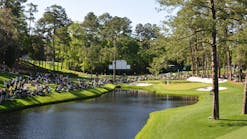On June 28, 2015, the Sleepy Hollow fire ignited around 2:15 p.m in north central Washington state. High winds propelled the fire to the east and south toward the city of Wenatchee. By Monday afternoon, Level Three evacuations were issued to more than 1,000 residents as well as many businesses in the area. Strong winds and triple-digit temperatures spread the fire quickly from where it started—approximately three miles west of the town. Crews and trucks from seven Chelan County fire districts and three Douglas County fire districts responded to the blaze. By Monday evening, aerial bucket drops from two helicopters were underway to assist with controlling the fire. More than 3,000 acres and 30 homes and businesses were burned in the blaze before it was contained a week later.
The Problem
The City of Wenatchee planned to hydro-seed to stabilize 11 acres of steep slope where vegetation was burned during the fire. A primary concern after a fire is lack of vegetation to control runoff or stabilize the soil. Increased risks of mudslide or rockslides create more issues for the areas affected. Thousands of acres of sage and grass were burned along the slopes just outside of Wenatchee. Rain on Monday provided some assistance to firefighters battling the blaze; however, heavier rain south of Wenatchee in Pine Canyon caused a mudslide that solidified concerns about stabilization of slopes affected by the fires.
The Solution
The City of Wenatchee and the Community Foundation of North Central Washington funded the restoration project and contracted John Larson with APEX Erosion Control of Clarkston, Wash., to spray the slopes to prevent erosion in the spring. NaturesOwn X9000 hydro-seeding mulch, mixed with organic grass seed varieties found locally, were applied to the slopes. The mulch was purchased from Hamilton Mfg. Inc. (HMI) of Twin Falls, Idaho. HMI and APEX were able to provide their expertise from past fire reclamation projects.
NaturesOwn X9000 is a 100% bio-based blend of high-tensile biodegradable bast fibers, cellulose fibers and a non-toxic biopolymer-based tackifier. Contractors have utilized NaturesOwn mulch for decades. The ease of handling, high loading capacity with smooth mixing, seamless application, proven results and cost savings make this product useful to contractors. High loading capacity uses less water, which reduces costs for water, fuel and labor. Projects can be covered more quickly with a product that is easy to apply and designed to last while saving water and enhancing germination by contouring to the soil surface to conserve moisture and create a semi-permeable barrier to water loss. Large-scale erosion control testing performed by TRI Environmental shows that it is 99.7% effective against erosion.
The Results
Just six months after the X9000 was applied and less than a year after the fire, new germination can be seen and the area is quickly returning to its previous landscape. The application of the mulch with the new seed has produced substantial growth, and the slopes remain stable without any signs of sliding or eroding. X9000 has proven an effective solution for fire remediation.






